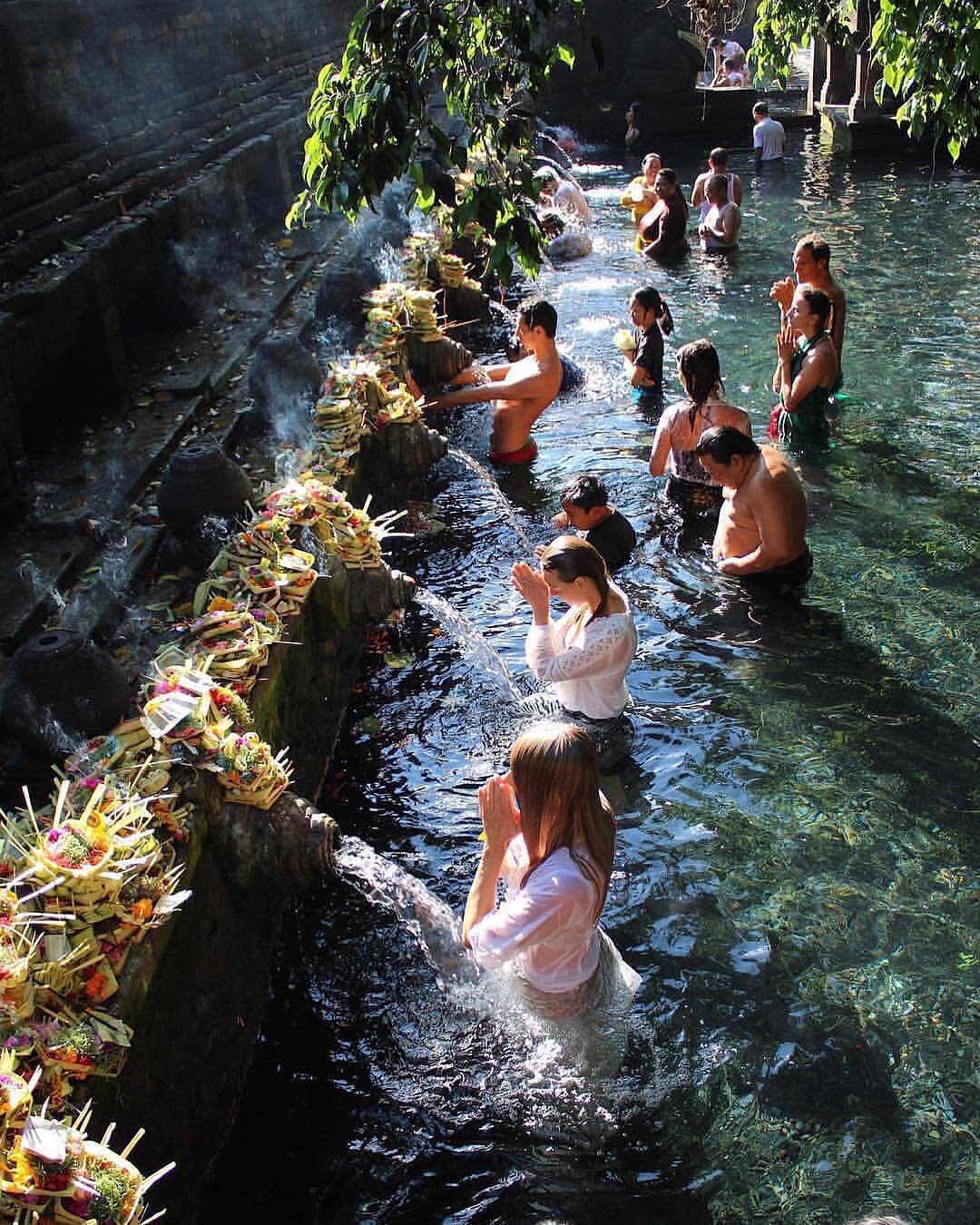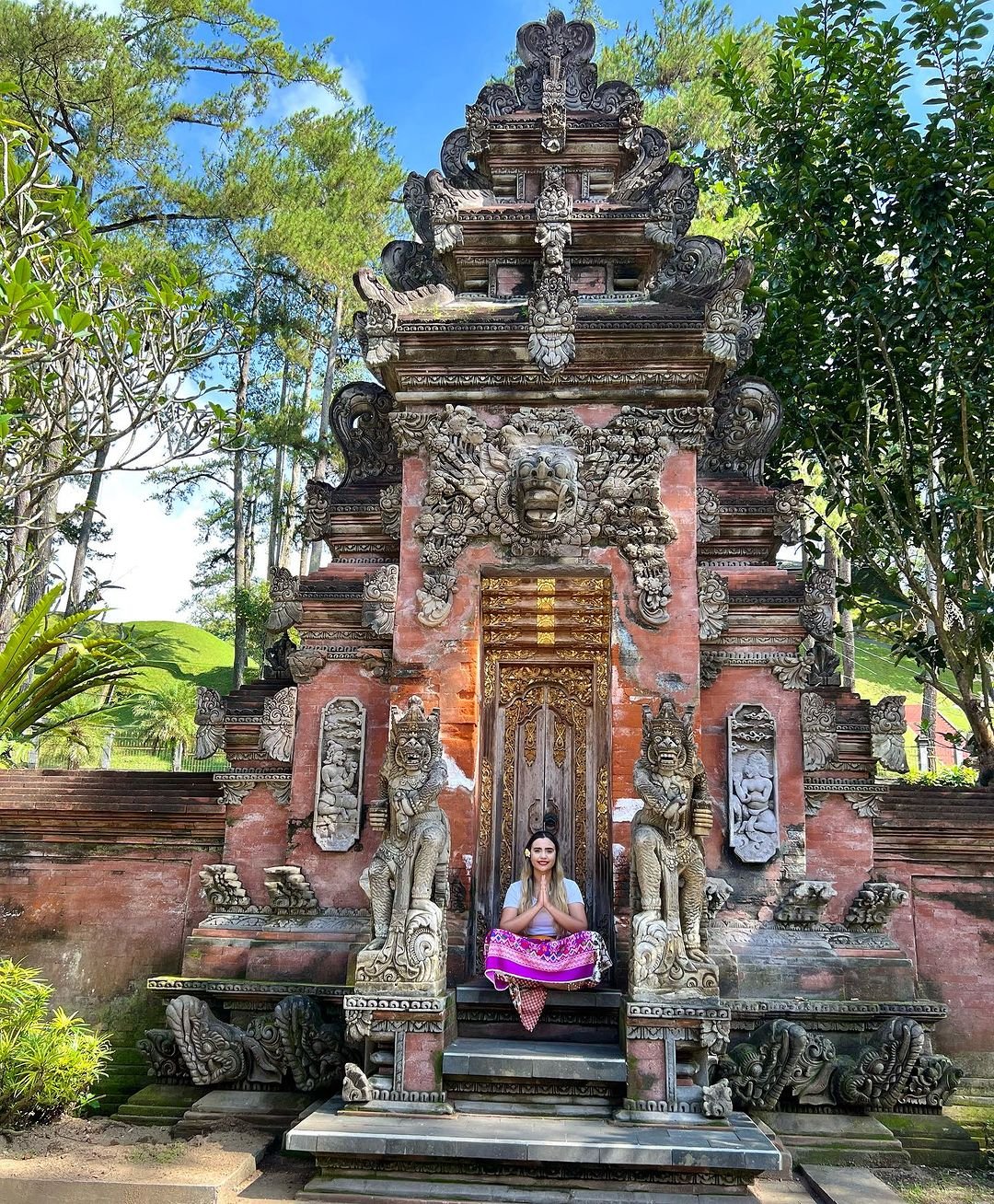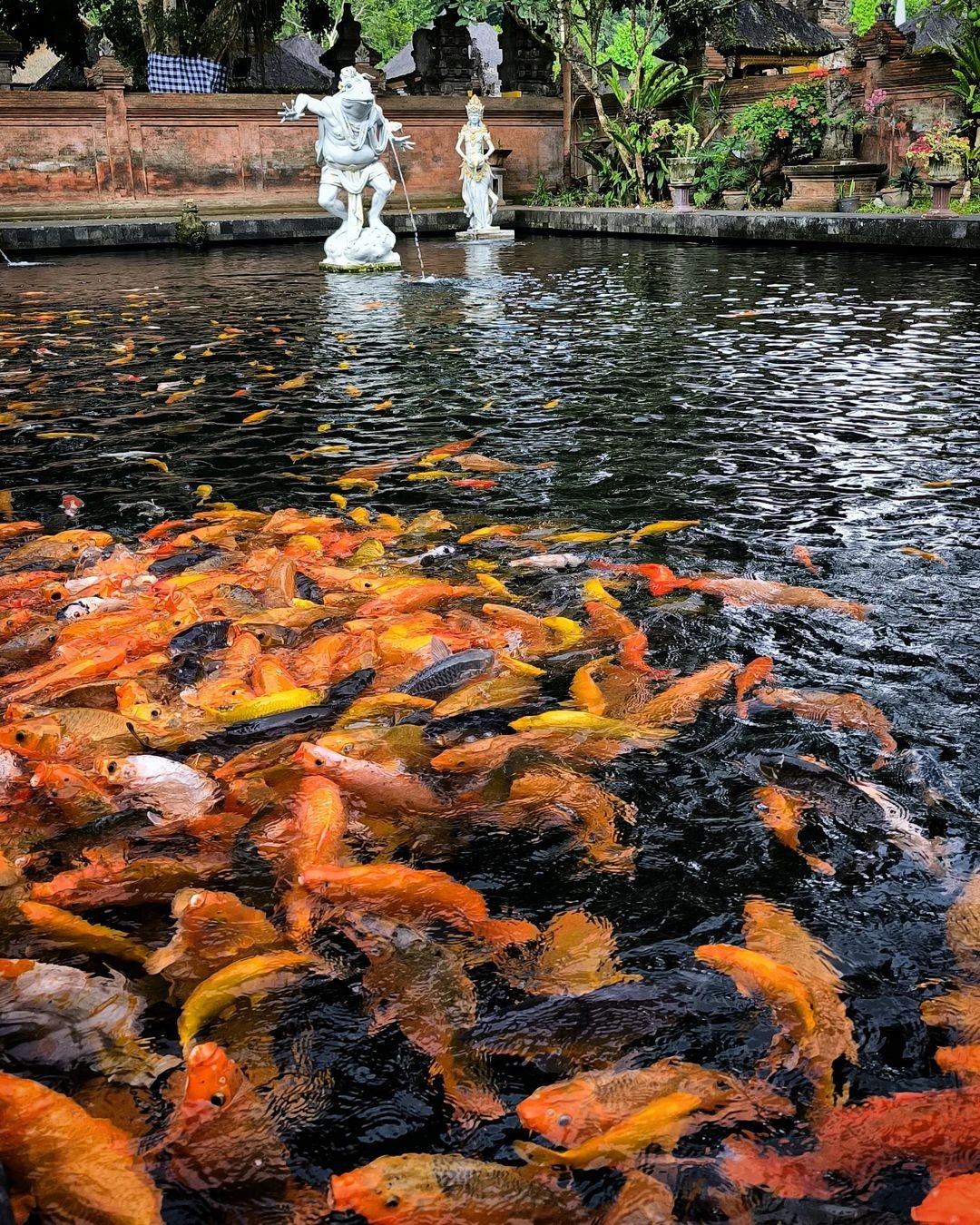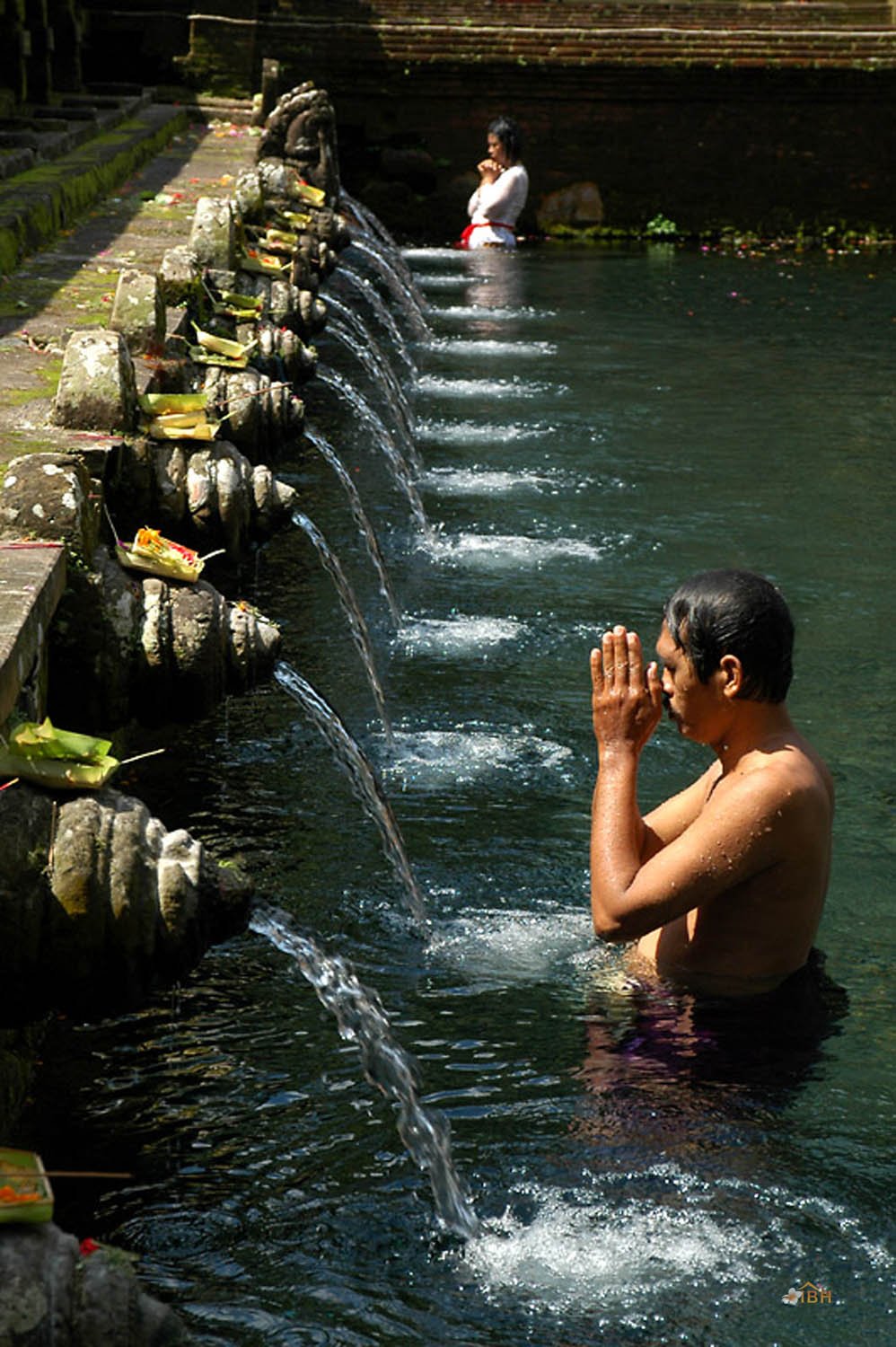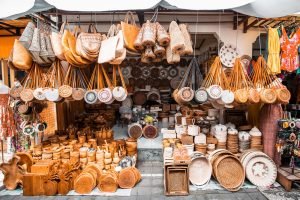Tirta Empul Temple stands as a timeless sanctuary nestled amidst the lush landscapes of Bali, renowned for its sacred waters and spiritual significance. Located near the town of Tampaksiring, this ancient Hindu temple is revered for its natural spring, which is believed to possess purifying powers.
As visitors approach Tirta Empul, they are greeted by a sense of tranquility and reverence. The temple complex is adorned with traditional Balinese architecture, adorned with intricate carvings and ornate stone shrines. Stepping inside, one is enveloped in an atmosphere of spirituality, as the sounds of prayers and offerings fill the air.
The centerpiece of Tirta Empul is its holy spring, where devotees come to partake in a ritual purification ceremony known as “melukat.” Here, amidst a series of intricately carved spouts, visitors immerse themselves in the sacred waters, symbolically cleansing their body and soul of impurities.
Beyond its spiritual significance, Tirta Empul is also a testament to Bali’s rich cultural heritage. The temple complex is adorned with lush gardens, tranquil courtyards, and ancient stone structures, providing a serene setting for contemplation and reflection.
As one explores Tirta Empul, they are transported back in time, to a place where tradition and reverence intertwine. Whether seeking spiritual renewal or simply marveling at the beauty of Bali’s cultural treasures, a visit to Tirta Empul Temple is sure to leave a lasting impression on the soul.
The sacred springs at Tirta Empul in Tampaksiring central Bali, Gianyar district are revered by all Balinese people. It is said that the Holy Springs were created by the god Indra when he pierced the earth to create a spring of amerta (the elixir of immortality), which he created to revive his army that was poisoned by the evil king, Mayadanawa.
The Holy Springs bathing area was built under the rule of Sri Candrabhaya Singha Warmadewa in the 10th century and the waters are believed to have magical curative powers. Every year people journey from all over Bali to purify themselves in the clear pools of holy spring water. After leaving a small offering of thanks to the deity of the Holy Spring, men and women enter the pool and move from station to station to be purified by the flow of Holy Spring water – the source of life and prosperity.
On the full moon of the fourth month (October on the Balinese calendar), the villagers from nearby Manukaya bring a sacred stone (which is housed in the Pura Sakenan in Manukaya) to be cleansed at Tirta Empul. Early this century, the Old Balinese inscriptions on this stone were deciphered for the first time by the Dutch archaeologist Stutterheim. The inscriptions read that on the anniversary of the construction of Tirta Empul, falling on the full moon of Kartika (the fourth month – October) the stone should be purified at the pool. The villagers have been aware of the meaning of the inscriptions and have continued to follow this sacred duty since this time – the inscription was dated October, A.D. 962!
When visiting the Tirta Empul Holy Springs and temple complex and wish to enter the springs for purification, it is highly recommended that you seek a spiritual guide to lead you through the ceremonies to make your visit a valid and authentic experience. Please respect the customs and sacred intent that Balinese people hold when offering their prayers and seeking purification. Note that normally no photos are to be taken within the Holy Springs unless you have sought the appropriate permissions.
As an iconic Balinese cultural and religious treasure, much has been documented about Tirta Empul and we provide the following references for your information:
Ardana, Drs.Gst.Gede : Pengertian Pura di Bali, University of Udayana Press, 1971
Kempers, Dr. A.J : Monumental Bali, Introduction to Balinese Archaeology & Guide to the Monuments, Periplus Addition, 1989
Hans Hofer: Insight Guides Bali, Apa Publication, 1994
Rata, Drs. I.B. : Konsepsi Dasar dan Pengembangan Pura di Bali, Fakultas Sastra, Universitas Udayana, Denpasar, Bali, 1979
Wertheim, W.F. : Bali Studies in Life and Thoughts, and Rituals, Les Editions A Manteau S.A., Bruxelles van Hoeve Ltdd – The Hague and Bandung,1960.
At Individual Bali Hospitality, we specialize in crafting unforgettable holiday experiences in Bali, ensuring each moment is filled with joy and lasting memories. Our team is dedicated to curating personalized itineraries tailored to your preferences, allowing you to explore Bali’s cultural treasures, natural wonders, and hidden gems with ease. Contact us today at info@individualbali.com or via WhatsApp at +62-811-399-513 to start planning your dream vacation in Bali.




